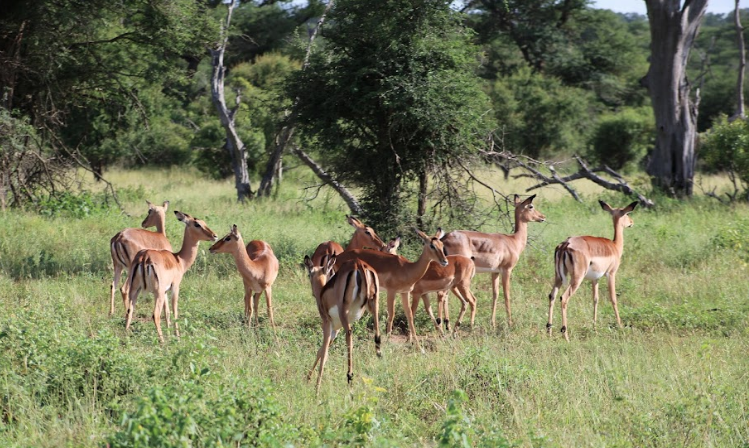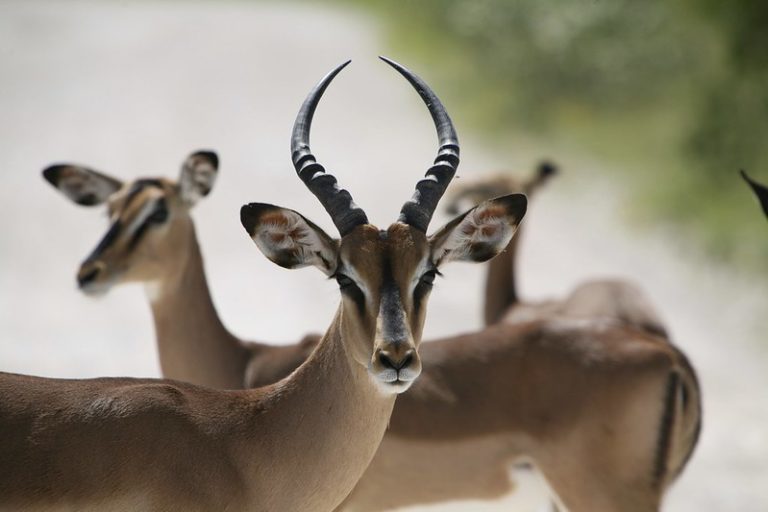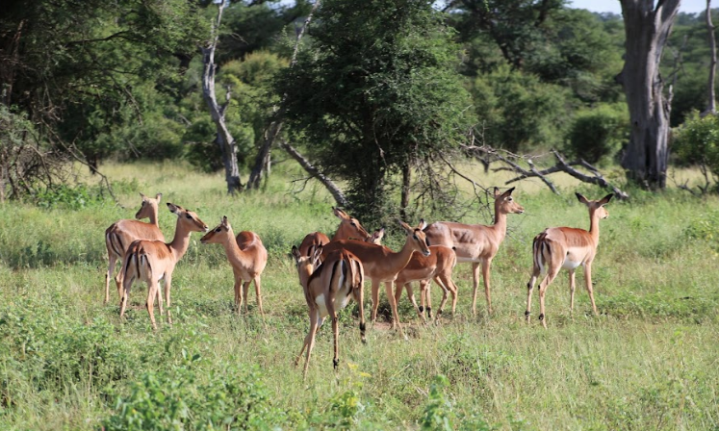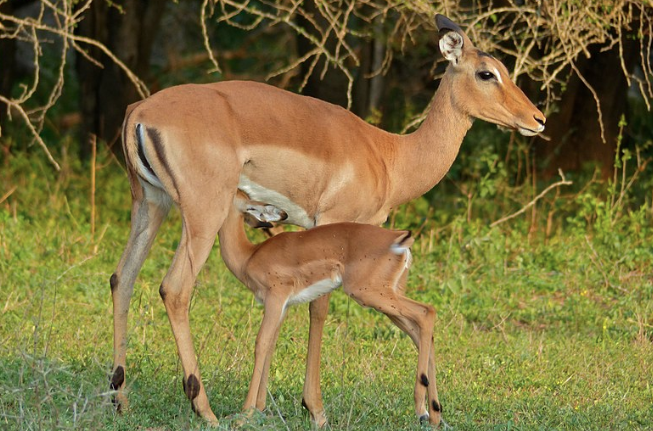Impala are Kruger’s most successful species, with a population of about 176 000 individuals in the park. They’re a guaranteed sighting on a drive in Kruger, and because of their prevalence they are often overlooked, but don’t underestimate how special these antelopes are.

1. Impalas are actually one of a kind! They’re the only member of the genus Aepyceros, (Aepyceros melampus) but did you know the ones we see in Kruger are not the only kind of impala? In Namibia and southern Angola, an arid adapted subspecies, the black-faced impala (Aepyceros melampus petersi) is found. Black-faced impalas are up to 10kg heavier than the impalas we know, have longer, bushier tails and a characteristic black smudge on their faces. It is estimated that only around 3000 of them are left in the wild!

Black faced impala
2. The species has remained virtually unchanged for an estimated five million years, and not for no reason. They are highly adaptable and evolutionarily smart for a number of reasons.
3. A favourite prey for predators, Impalas have a few strategies to keep themselves off the menu. The first is the “follow me” signal, communicated by lifting the tail to expose the black and white striped rump. Impala, like a lot of animals, are colour blind so this flash of black and white is highly visible to them and easy to follow when they scatter in the face of danger.
4. Another defense is their colouring. Impala have a line of shading through their torso that acts as a kind of camouflage, which supposedly brakes up their 3-D form, helping them to blend in with their surroundings.
5. Impalas also have metatarsal glands on their hind legs above their hooves. They are the only antelope in South Africa with these glands, and it is thought that a scent released from these glands may act as a cue for others to follow during a dangerous situation. Impalas rely on numbers for safety, and hang around in herds of up to 120 animals. With their noticeably large ears and peripheral vision, impalas have excellent senses and alert others of danger with loud, sharp snort. They often also associate with other species like zebras or baboons, relying on them for extra vigilance.
6. An incredibly athletic species, impalas can jump up to 2m high and 10m in distance. This ability suits their habitat, usually woodlands full of shrubs and bushes that they can clear easily.
7. Impala rams form bachelor herds but become fiercely intolerant of each other during rutting season in May, when they defend their small territories by chasing each other and “roaring” at other threatening males. This roar can sound dangerous and a bit frightening to those unfamiliar to the sound, and can be heard up to two kilometres away.
The mating season can be exhausting for rams as they fight off challengers, herding their “harem” of ewes and mating with them. Rams who are unsuccessful in securing a group of ewes to mate with usually retreat to a bachelor herd.
8. Females typically give birth about seven months after mating, and usually to a single lamb. It is often said that impala ewes have the ability to “decide” when to give birth, depending on rainfall and other factors, but this has never been proven. In the lambing season, usually November to January, impala ewes group together and form “nurseries” with all the babies, who run and chase one another. This play has a purpose, as they strengthen their legs and prepare for the inevitable time when they will have to run for their lives.

9. Impala lambs are popular prey, and only around 50% of them make it to breeding age. Still, a 50% survival rate is not bad for an animal as vulnerable as a tiny antelope. Impalas combat the threat from predators by giving birth all at once, (about 90% of females give birth within three to five weeks of one another) ensuring that there are simply too many lambs for predators to catch.
10. Impalas engage in allogrooming, a reciprocal grooming ritual (usually seen in primates,) where individuals use their teeth to remove ticks and other parasites from one another’s coats.
11. Their diet is another key to the species’ success, as they graze as well as browse unlike other, pickier antelope. Impalas eat grass as well as leaves, fruits and pods, depending on the season and what is most abundant at the time.






















